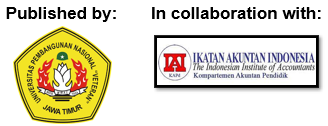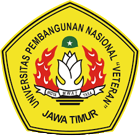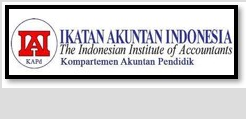Using Electronic Money in Financial Transactions: Integrating the Second UTAUT Model
DOI:
https://doi.org/10.33005/jasf.v6i2.405Keywords:
Electronic money, financial technology, financial transaction, UTAUT-2 modelAbstract
The use of digital or electronic money has become a trend in people's lives nowadays. Digital money payment systems make it easy to access transactions and even record transactions directly. The acceptance of technology, such as electronic money, in financial transactions was explored by integrating the second Unified Theory of Acceptance and Use of Technology (UTAUT) model. This research wants to know the behavior of using digital or electronic money in people's daily lives in carrying out financial transactions. This research provides an overview of exploratory observations using a quantitative approach. The primary data used to answer the phenomenon is data from a questionnaire. The target sample is a random population with a respondent age range of 17-55 years. IBM SPSS Statistics 25 and structural equation modeling (SEM) are the analytical tools used to identify and validate the elements and variables associated with the desire to conduct financial transactions using electronic or digital currency. There were 381 respondents from several large cities such as Medan, Jakarta, Bandung, Semarang, and Surabaya. The results of research on independent variables on behavior intention show there are four factors, of which there is a significant positive influence, namely performance expectations, social factors, facilitating conditions, and hedonic motivation; one variable has no effect, namely effort expectations. Then the price value and habit variables influence behavioral usage. Moreover, results from the intention variable also significantly impact behavioral usage.
Downloads
References
Abidin, R., Dewi, S., Asmalasari, A. S., Syawali, F. I., & Hidayat, H. S. (2023). The Use of Electronic Money as a Transaction System in Indonesia. Journal of Islamic Economics and Business, 3(2), 101–117. https://doi.org/10.15575/jieb.v3i2.30487
Alam, M. M., Awawdeh, A. E., & Muhamad, A. I. Bin. (2021). Using e-wallet for business process development: challenges and prospects in Malaysia. Business Process Management Journal, 27(4), 1142–1162. https://doi.org/10.1108/BPMJ-11-2020-0528
Aveni, T., & Roest, J. (. (2017). China’s Alipay and WeChat pay. In Reaching Rural Users. Certified Government Audit Professional (CGAP). https://www.cgap.org/sites/default/files/Brief-Chinas-Alipay-and-WeChat-Pay-Dec-2017.pdf.
Balch, O. (2020). Are digital payments COVID winners? May 10. https://www.raconteur.net/digital-transformation/digital-payments-covid-19.
BIS. (1996). 66th Annual Report Bank for International Settlement (Vol. 66). https://www.bis.org/publ/arpdf/archive/ar1996_en.pdf.
Chiu, I. H. (2017). A new era in fintech payment innovations? A perspective from the institutions and regulation of payment systems. Law, Innovation and Technology, 9(2), 190–234. https://doi.org/10.1080/17579961.2017.1377912.
Choi, H., Park, J., Kim, J. & Jung, Y. (2020). Consumer preferences of attributes of mobile payment services in South Korea, Telematics and Informatics, 51, 101397. https://doi.org/10.1016/j.tele.2020.101397.
Cohen, et al. (2007). Metode Penelitian dalam Pendidikan (7th ed.).
Givelyn, I., Rohima, S., Mardalena, M., & Widyanata, F. (2022). The Impact of Cashless Payment on Indonesian Economy: Before and During Covid-19 Pandemic. Jurnal Ekonomi Pembangunan, 20(1), 89–104. https://doi.org/10.29259/jep.v20i1.17898.
Haddad, C. & Hornuf, L. (2019). The emergence of the global fintech market: economic and technological determinants. Small Business Economics, 53(1), 81–105. https://link.springer.com/article/10.1007/s11187-018-9991-x.
Hair Jr., J. F., Hult, G. T. M., Ringle, C. M., Sarstedt, M., Danks, N. P., & Ray, S. (2021). Partial Least Squares Structural Equation Modeling (PLS-SEM) Using R: A Workbook. Springer Nature Switzerland AG.
Hidayat, M. T., Aini, Q., & Fetrina, E. (2020). Penerimaan Pengguna E-Wallet Menggunakan UTAUT 2 (Studi Kasus) (User Acceptance of E-Wallet Using UTAUT 2 – A Case Study). Jurnal Nasional Teknik Elektro Dan Teknologi Informasi, 9(3), 239–247. https://doi.org/10.22146/.v9i3.227.
Kang, J. (2018). No Mobile payment in Fintech environment: trends, security challenges, and services. Human-Centric Computing and Information Sciences, 8(32). http://dx.doi.org/10.1186/s13673-018-0155-4.
Karim, M. W., Haque, A., Ulfy, M. A., Hossain, M. A., & Anis, M. Z. (2020). Factors Influencing the Use of E-wallet as a Payment Method among Malaysian Young Adults. Journal of International Business and Management, 3(2), 01–12. https://doi.org/10.37227/jibm-2020-2-21/.
Kaur, P., Dhir, A., Singh, N., Sahu, G., & Almotairi, M. (2020). An innovation resistance theory perspective on mobile payment solutions. Journal of Retailing and Consumer Services, 55(1), 102059. https://doi.org/10.1016/j.jretconser.2020.102059.
Kazan, E., Tan, C.W., Lim, E.T., Sørensen, C. and Damsgaard, J. (2018). Disentangling digital platform competition: the case of UK mobile payment platforms. Journal of Management Information Systems, 35(1), 180–219. https://doi.org/10.1080/07421222.2018.1440772.
Khafiyah, N. N. (2018). Pengaruh Persepsi Mahasiswa Mengenai Uang Elektronik Terhadap Minat Menggunakan Aplikasi OVO. Skripsi, UIN Syarif Hidayatullah.
Lashitew, A.A., Van Tulder, R. and Liasse, Y. (2019). Mobile phones for financial inclusion: what explains the diffusion of mobile money innovations. Research Policy, 48(5), 1201–1215. https://doi.org/10.1016/j.respol.2018.12.010.
Liébana-Cabanillas, F. J., Sánchez-Fernández, J., & Muñoz-Leiva, F. (2014). Role of Gender on Acceptance of Mobile Payment. Industrial Management & Data Systems, 114(2), 220–240. http://dx.doi.org/10.1108/IMDS-03-2013-0137.
Martin, A. (2019). Mobile Money Platform Surveillance. Surveillance & Society, 17(1/2), 213–222. http://dx.doi.org/10.24908/ss.v17i1/2.12924.
Mayanti, R. (2022). Preferensi Masyarakat Terhadap Quick Response Code Indonesian Standard Sebagai Sarana Teknologi Pembayaran Digital. Faktor Exacta, 15(1). https://doi.org/10.30998/faktorexacta.v15i1.11421.
Nizam, F., Hwang, H.J. and Valaei, N. (2019). Measuring the effectiveness of E-wallet in Malaysia. Studies in Computational Intelligence, Springer International Publishing, 786. http://dx.doi.org/10.1007/978-3-319-96803-2_5.
Nuzulita, N., & Mudjiumami, I. C. (2023). Efektifitas Sistem Informasi Ditinjau dari Dimensi Kualitas Pelayanan : (Effectiveness of Information Systems Viewed from the Dimensions of Service Quality). Indonesian Journal of Sustainability Policy and Technology, 1(2), 70-81. https://doi.org/10.61656/ijospat.v1i2.155.
Pertiwi, D., Suprapto, W., & Pratama, E. (2021). Perceived Usage of E-Wallet among the Y Generation in Surabaya based on Technology Acceptance Model. Jurnal Teknik Industri, 22(1), 17–24. https://doi.org/10.9744/jti.22.1.17-24.
Puspitasari, N. C. (2021). Analisis Pengaruh Penggunaan Electronic Money Terhadap Konsumsi Masyarakat di Indonesia. https://dspace.uii.ac.id/handle/123456789/31068.
Rohman, A. F. K. (2020). Analisis Minat dan Perilaku Penggunaan Uang Elektronik (E- Money) pada Layanan Aplikasi OVO di Kabupaten Jember Menggunakan Metode UTAUT 2. https://repository.unej.ac.id/xmlui/handle/123456789/98241.
Setyorini, A., & Meiranto, W. (2021). Analisis Faktor-Faktor Yang Memengaruhi Penerimaan Dan Penggunaan Sistem Informasi Manajemen Daerah (Simda) Dengan Menggunakan Model Utaut 2 (Studi Empiris pada Pengguna Sistem informasi Manajemen Daerah (SIMDA) di Kota Salatiga). Diponegoro Journal of Accounting, 10(1), 1–15. http://ejournal-s1.undip.ac.id/index.php/accounting
Shaikh, A.A., Glavee-Geo, R. and Karjaluoto, H. (2017). Exploring the nexus between financial sector reforms and the emergence of digital banking culture – evidences from a developing country. Research in International Business and Finance, 42, 1030–1039. https://doi.org/10.1016/j.ribaf.2017.07.039.
Sholihin, M. (2013). Analisis Sem-PLS dengan Warp PLS3.0. Penerbit Andi.
Singh, N., Sinha, N. and Lioebana-Cabanillas, F. J. (2020). Determining factors in the adoption and recommendation of mobile wallet services in India: analysis of the effect of innovativeness, stress to use and social influence. International Journal of Information Management, 50, 191–205. https://doi.org/10.1016/j.ijinfomgt.2019.05.022.
Soegoto, D. S., & Tampubolon, M. P. (2020). E-Wallet as a Payment Instrument in the Millennial Era. IOP Conference Series: Materials Science and Engineering, 879(1). https://doi.org/10.1088/1757-899X/879/1/012139.
Stavins, J. (2017). How Do Consumers Make Their Payment Choices? Federal Research Bank of Boston. https://ssrn.com/abstract=2995875.
Sugiyono. (2019). Metode Penelitian Kuantitatif, Kualitatif, dan R&D. Alphabet.
Tan, J.D., Purba, J.T. and Widjaya, A. E. (2019). Financial technology as an innovation strategy for digital payment services in the Millennial generation. 1st Aceh Global Conference (AGC 2018). https://doi.org/10.2991/agc-18.2019.58.
Taufik, M. H., Aini, Q., & Fetrina, E. (2020). Penerimaan Pengguna E-Wallet Menggunakan UTAUT 2 (Studi Kasus). Jurnal Nasional Teknik Elektro Dan Teknologi Informasi, 9(3), 239–247. https://doi.org/10.22146/.v9i3.227.
Tun-Pin, C., Keng-Soon, W.C., Yen-San, Y., Pui-Yee, C., Hong-Leong, J.T. and Shwu-Shing, N. (2019). An adoption of fintech service in Malaysia. South East Asia Journal of Contemporary Business, 18(5), 134–147. https://seajbel.com/wp-content/uploads/2019/05/seajbel5-VOL18_241.pdf.
Usman, R. (2017). Karakteristik Uang Elektronik Dalam Sistem Pembayaran. Yuridika.
Venkatesh, Thong, & Xu. (2012). Consumer Acceptance and Use of Information Technology: Extending the Unified Theory of Acceptance and Use of Technology. MIS Quarterly, 36(1), 157. https://doi.org/10.2307/41410412.
Widayat, W., Masudin, I., & Satiti, N. R. (2020). E-Money Payment: Customers’ Adopting Factors and the Implication for Open Innovation. Journal of Open Innovation: Technology, Market, and Complexity, 6(3), 57. https://doi.org/10.3390/joitmc6030057.
Wilfan, A. F., & Martini, E. (2021). Faktor-faktor Yang Mempengaruhi Penggunaan Linkaja Berdasarkan Model Teori Utaut2 (unified Theory of Acceptance and Use of Technology2). EProceedings …, 8(6), 7729–7741. Skripsi, Telkom University.
Wong, A. (2020). enjana: RM50 eWallet credit only for Malaysians with mySejahtera app. https://www.malaymail.com/news/malaysia/2020/06/08/penjana-rm50-ewallet-credit-only-for-malaysians-with-mysejahtera-app/1873524.
Yaokumah, W., Kumah, P., & Okai, E. A. (2017). Demographic influences on e-payment services. Journal of E-Business Research, 13(1), 44–65. http://dx.doi.org/10.4018/IJEBR.2017010103.














